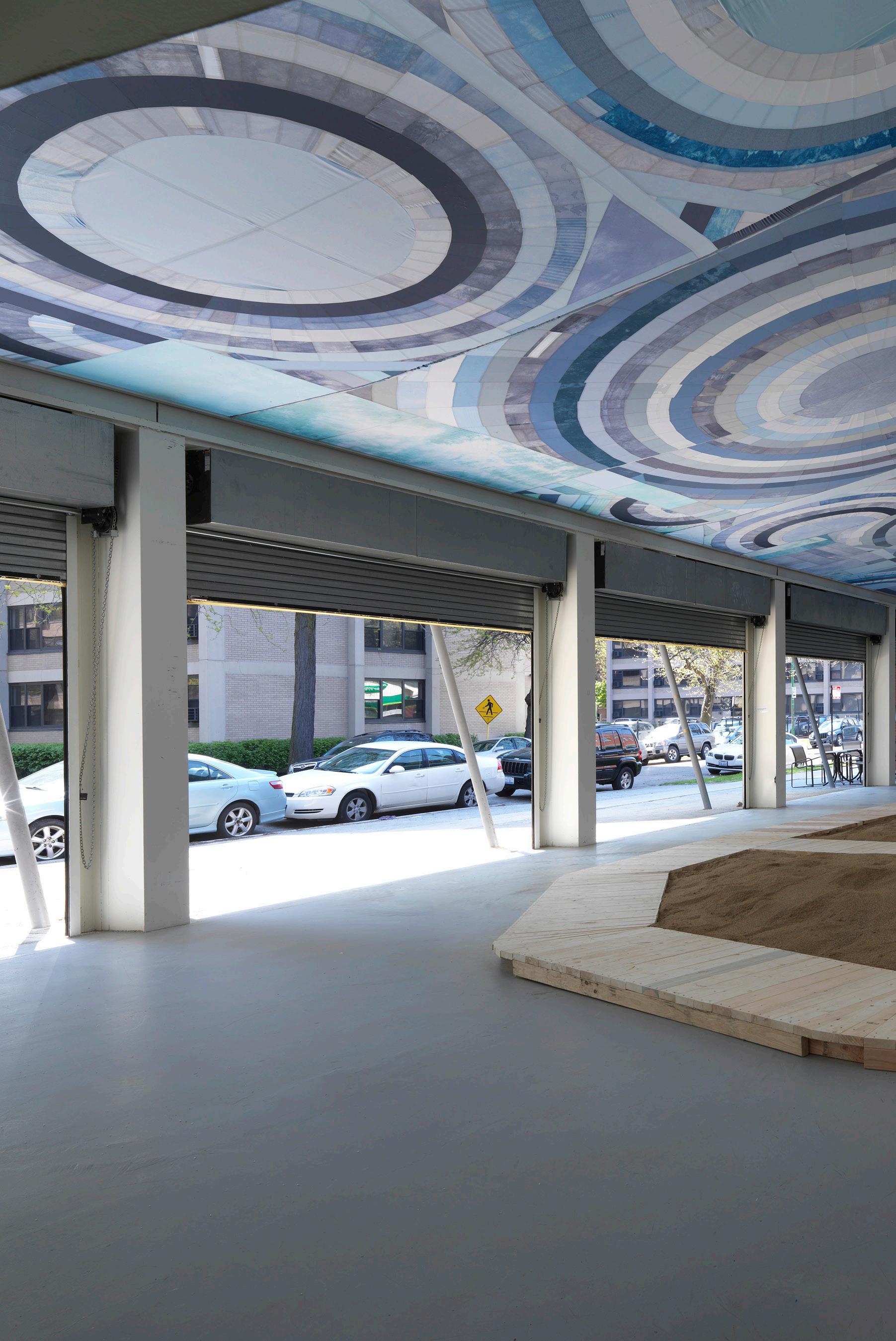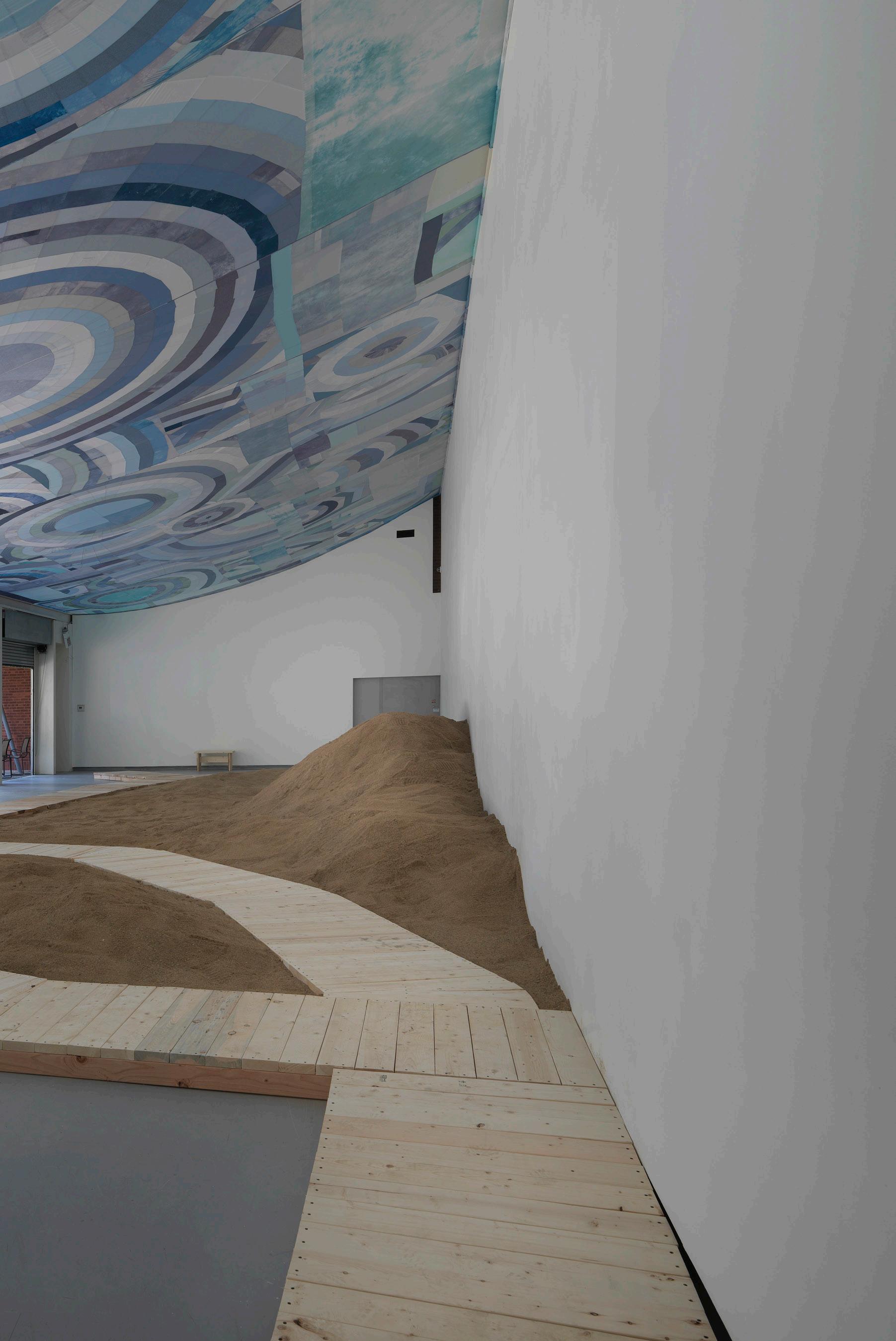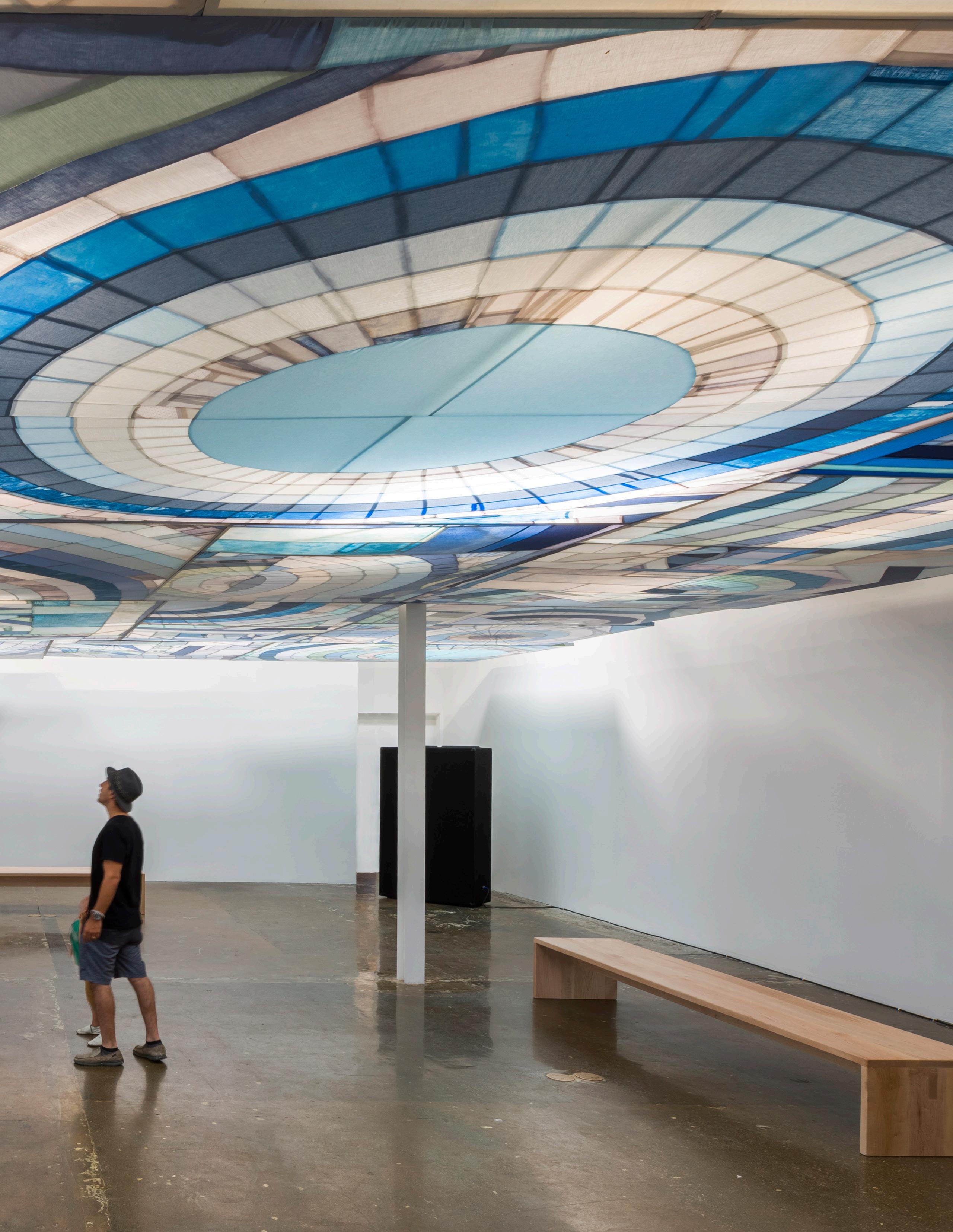
4 minute read
Karen Reimer: Sea Change by Maria Elena Buszek
Karen Reimer: Sea Change by Maria Elena Buszek
If many of Karen Reimer’s works in Sea Change make you want to run home and hide under the covers, that’s pretty much how she wants it. On several different levels.
Advertisement
Most of the pieces in this exhibition were created during the Covid-19 pandemic when the artist—like most of us—was trapped at home: Zoom meetings for human contact, doom-scrolling the media for the news, scrutinizing her suddenly-shrunken environment with fresh eyes. And—again, like most of us—there were pleasures as well as panic in this new existence, which Reimer deftly infuses into this new body of work.
The series’ focus on climate change began before the pandemic did. Indeed, several of the (doubly) recycled works in the exhibition began their lives as part of her 2017 Shoretime Spaceline installation at the Hyde Park Art Center, in which she drew attention to the building’s existence on the former site of the Chicago Beach Hotel, built as part of the 1893 World’s Columbian Exposition on a foundation of sand dredged up from Lake Michigan. The hubris of this man-made “natural attraction,” establishing a disorienting new relationship between land, water, and sky, distance and time, is more disorienting still when one realizes how normalized often precarious sites like these have become across the post-Industrial urban landscape.
Reimer’s research of rising tides and drought for this and other works led her toward more information on how rapidly the planet’s water sources and shorelines are changing. Overwhelmed by the almost incomprehensible scale of global climate change, there is a certain solace in the maps, charts, and graphs often enlisted to make sense of it.
Yet, even these well-intended graphics frequently distort their message with poor design or typography, which can exacerbate viewers’ tendencies to misread or over-interpret them in such a way that suggest patterns or connections where none exist. The latter phenomenon, known as apophenia, intrigues Reimer—as an artist whose primary medium is embroidery using found fabric, in her practice patterns abound.
Reimer has addressed her “boundary troubles” (in a 2004 series of the same name) where patterns are concerned, and has built an oeuvre that pointedly problematizes our tendencies to police the divisions between art and craft, making and conceptualism, abstraction and figuration. But, her research into climate change revealed new, more terrifying boundary breaches that she sought to meditate upon and understand in the soul-deep way that the labor-intensive medium of stitching allows, creating stitched “drawings” that reproduce images and graphs of melting ice at the poles and drought predictions for the United States. But, with the onset of the pandemic, as our worlds shrank, Reimer had the realization: “my backyard was the best place to focus,” and the Great Lakes became her subject.
Yet the works in Sea Change aren’t merely representations of the facts and figures—indeed, they are just as much about finding a way to represent humanity’s inability to truly process or grasp this information. Reimer’s texts and graphics, while rendered with the astonishing precision of a masterful needlewoman, are laid over swatches and collages of patterned fabric that obscure or manipulate the information placed atop them: temperature changes of the waters around the upper Midwest seem “targeted” in the red cross-hairs of tartan; toxic algae blooms in Lake Erie blend into and hide behind the dappled patterns of impressionistic leaves and trees; pie charts pin-pointing mercury levels and their sources throughout the Great Lakes defy legibility as they merge with polka-dot patterns of identical sizes. The mash-up of the patterns in the fabric and the patterns in the infographics she incorporates into them is meant to explore the tensions between, as Reimer puts it, what we see as “information-carrying” and what is “not information-carrying,” in order to push these ordering systems “to the point where they might break”—a comprehension-shattering experience that might be the only appropriate response to the apocalyptic message they contain.
Sources of Mercury in Great Lakes Sediment, 2021 (detail)
And yet the friendly, familiar fabrics that serve as their foundation still give us a sense of hope, at the very least, for humanity’s ability to contemplate and act on our part in this crisis. This is particularly evident in the bed-sized quilt compositions derived from the lake- and sky-emulating collage of found fabric first used in the Shoretime Spaceline installation, which she has yet again repurposed. Reimer admits this constant reuse of materials helps ease her concern about even environmental artists’ tendency toward “making more stuff.” But the quilts in the exhibition also serve another, more conceptual notion of reuse that reverses artists’ tendency to “upcycle” functional objects into objects of art as Reimer pointedly turns the works from her elaborate art installation into functional objects, albeit deeply-conceptualized and sumptuously-crafted ones. These works conjure the safety of our beds and invite us to contemplate both the poetic fantasy and the literal possibility of Sleeping Under the Sky/Sleeping Under the Lake in our age of global warming. May we awaken resolved to work toward a world where such visions remain the stuff of dreams, rather than reality.
Shoreline Spacetime Hyde Park Art Center May 22-August 13, 2016


Outside/In LAXART September 22- Nivember 10, 2019





